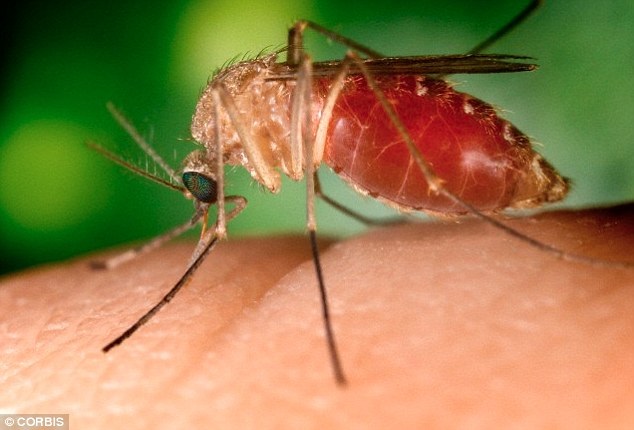The Republic of Korea supports food security for vulnerable communities in northern Mozambique
Highlights:
A more common mosquito species ma be able to carry Zika
Until now, the mosquito species Aedes aegypti has been identified as the main transmitter of Zika infections.
But Brazilian scientists have found they were able to infect another species, Culex quinquefasciatus, with the virus in a laboratory
In Brazil, Culex quinquefasciatus is 20 times more common than Aedes aegypti, the researchers said.
Culex quinquefasciatus also exists in more temperate climes, such as the southern United States, where it is known to carry the West Nile virus, and can survive winters.
Unlike Aedes aegypti, Culex quinquefasciatus could keep a virus in circulation during cold months.
Though the Culex mosquitoes prefer to feed on the blood of birds, they also commonly bite humans, especially in rural areas.
They also rest in trees and other high areas, while Aedes aegypti mosquitoes rests in low spots, often indoors.
This means efforts to kill each species, including pesticide use, would need to be different.
Dr Grayson Brown, of the University of Kentucky, whose laboratory specialises in controlling mosquitoes, said if Culex mosquitoes were indeed proven to transmit Zika 'it would really complicate the public health issue.'
In an interview on Globo, Brazil's leading television network, lead scientist Dr Constancia Ayres, of the Oswaldo Cruz Foundation, said it was 'easy' to infect the Culex quinquefasciatus with the virus.
She said: 'We saw an ease of infection and an ease of dissemination of the virus to the salivary glands.'
While public health experts have cited Aedes aegypti as the mosquito overwhelming responsible for spreading Zika, with another species of the same genus, Aedes albopictus, also transmitting the virus in smaller numbers.
There has been evidence about other mosquitoes linked to Zika.
For example, researchers have found more than 20 mosquito species carrying the virus in Africa, although it was unclear whether they are all able to transmit the disease to humans.
Next, the Brazilian team will begin capturing Culex mosquitoes in areas near Recife, an area in the northeast of the country, where the virus is known to be circulating, in order to find out.
This research could take up to eight months, they said.
If a mosquito besides Aedes aegypti were found to transmit Zika infections in large numbers, it could make it more difficult to contain the current Zika outbreak.
Much remains unknown about Zika, including whether the virus actually causes microcephaly in babies, a condition defined by unusually small heads that can result in developmental problems.
Brazil said it has confirmed more than 640 cases of microcephaly, and considers most of them to be related to Zika infections in the mothers.
Authorities are also investigating another 4,200 suspected cases.
Traces of Zika virus have been found in the bodily fluids and tissue of mothers and babies affected by the condition.
Culex quinquefasciatus also exists in more temperate climes, such as the southern United States, where it is known to carry the West Nile virus, and can survive winters.
Zika: Scientists discover a much more common mosquito can also carry the virus

A mosquito more common than the one primarily known to transmit Zika infections may be able to carry the virus, scientist have found.
The alarming development could further complicate efforts to limit the spread of Zika, which has been linked to thousands of birth defects as it sweeps rapidly through the Americas.
Until now, the mosquito species Aedes aegypti has been identified as the main transmitter of Zika infections.
But Brazilian scientists have found they were able to infect another species, Culex quinquefasciatus, with the virus in a laboratory, raising concerns the virus could be carried by more prevalent species.
In Brazil, Culex quinquefasciatus is 20 times more common than Aedes aegypti, the researchers said.
More work is needed to determine whether Culex mosquitoes in the wild already are carrying the virus, as well as whether they can transmit Zika infections.
Zika virus infection is associated with symptoms such as fever, rash, joint and muscle pain and conjunctivitis.
The current outbreak in Central and South America was followed by increased reports of cases of microcephaly and Guillain-Barré syndrome (GBS), leading the World Health Organisation to declare it a global emergency.
Microcephaly is a condition in which a newborn’s head is smaller than normal and the brain may not have developed properly.
Guillain-Barré syndrome affects the immune and nervous systems, and is the leading cause of non-trauma related paralysis.
The researchers made their discovery after injecting 200 of the Culex quinquefasciatus mosquitoes with rabbit blood infected by Zika.
The virus circulated through the mosquitoes’ bodies and into their salivary glands, meaning they might be able to transmit a Zika infection by biting a person, they found.
In an interview on Globo, Brazil’s leading television network, lead scientist Dr Constancia Ayres, of the Oswaldo Cruz Foundation, said it was ‘easy’ to infect the Culex quinquefasciatus with the virus.
She said: ‘We saw an ease of infection and an ease of dissemination of the virus to the salivary glands.’
While public health experts have cited Aedes aegypti as the mosquito overwhelming responsible for spreading Zika, with another species of the same genus, Aedes albopictus, also transmitting the virus in smaller numbers.
There has been evidence about other mosquitoes linked to Zika.
For example, researchers have found more than 20 mosquito species carrying the virus in Africa, although it was unclear whether they are all able to transmit the disease to humans.
Next, the Brazilian team will begin capturing Culex mosquitoes in areas near Recife, an area in the northeast of the country, where the virus is known to be circulating, in order to find out.
This research could take up to eight months, they said.
If a mosquito besides Aedes aegypti were found to transmit Zika infections in large numbers, it could make it more difficult to contain the current Zika outbreak.
Much remains unknown about Zika, including whether the virus actually causes microcephaly in babies, a condition defined by unusually small heads that can result in developmental problems.
Brazil said it has confirmed more than 640 cases of microcephaly, and considers most of them to be related to Zika infections in the mothers.
Authorities are also investigating another 4,200 suspected cases.
Traces of Zika virus have been found in the bodily fluids and tissue of mothers and babies affected by the condition.
Culex quinquefasciatus also exists in more temperate climes, such as the southern United States, where it is known to carry the West Nile virus, and can survive winters.

Unlike Aedes aegypti, Culex quinquefasciatus could keep a virus in circulation during cold months.
Though the Culex mosquitoes prefer to feed on the blood of birds, they also commonly bite humans, especially in rural areas.
They also rest in trees and other high areas, while Aedes aegypti mosquitoes rests in low spots, often indoors.
This means efforts to kill each species, including pesticide use, would need to be different.
Dr Grayson Brown, of the University of Kentucky, whose laboratory specialises in controlling mosquitoes, said: ‘You can’t spray up high the way you can around buildings.’
If Culex mosquitoes were indeed proven to transmit Zika, ‘it would really complicate the public health issue’, he added.
The research has yet to be published in a scientific journal or reviewed by scientific peers elsewhere.












Leave a Reply
Be the First to Comment!
You must be logged in to post a comment.
You must be logged in to post a comment.